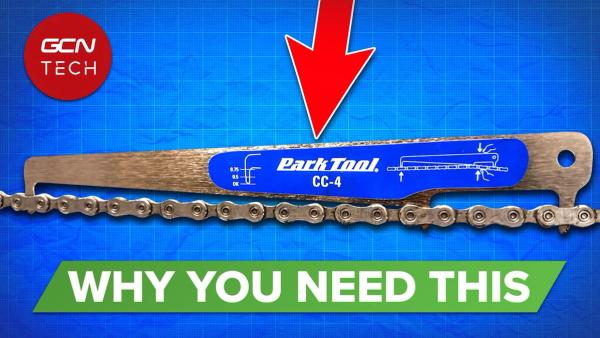What’s the difference between cheap and expensive wheels?
Wheels seem like an obvious thing to upgrade, but the differences across the price range may not be as big as you think.
James Howell-Jones
Junior Writer
Deep section carbon wheels are ubiquitous in the pro peloton and a common sight on group rides and amateur races. For many of us, moving from standard aluminium wheels to 50mm carbon wheels is one of the first upgrades we think about making on our bikes. But before we all sell a kidney to pay for some carbon hoops, it’s worth asking: do they actually make us any faster? And perhaps more importantly, could we get just as much an increase in performance just by upgrading our tyres and inner tubes?
Read more: Complete guide to road cycling tyres
We’ve laid out the differences between cheap and expensive wheels so you can make an informed decision. The difference in speed is probably smaller than you’d expect, but high-end wheels have a number of other advantages that could make them worth the investment for some cyclists.
Real-world speed difference

© GCN
Wind tunnels are popular, but they don't give real world results
The internet is awash with wind tunnel tests of carbon wheels. Depending on which test you look at, there’s a general consensus that a set of deep section wheels saves about 10-20 watts at 40kph.
There are a couple of problems with this kind of testing, though. First of all, very few of us ride consistently at 40kph. In reality, most amateur riders probably average somewhere between 20 and 30kph for a ride. At these lower speeds, the aerodynamic advantage of deep section wheels is dramatically reduced.
Then there’s the issue of the wind tunnel itself. The results that we get from wind tunnels are consistent, so we assume they’re reliable. In reality, though, the flow of air that we get in a wind tunnel is nothing like the swirl of air that we get out in the real world. In the real world, we ride through an ever changing mess of currents and drafts. A wind tunnel can’t replicate these kinds of conditions, and often gives us inflated results when we test different components for aerodynamic drag.

© GCN
We put cheap and expensive wheels head to head in Mallorca
To get a sense of how much faster deep section wheels are in the real world, GCN presenters Ollie Bridgewood and Alex Paton tested two sets of wheels head to head. Representing the expensive end of the market, they used Shimano’s top-end Dura Ace 50mm deep section wheels. Representing the low end of the market were a pair of unbranded, OEM wheels, the kind that come fitted as standard to loads of mid-range road bikes.
Ollie rode at a constant wattage over a 30 minute undulating course intended to replicate normal road riding – it had corners, climbs and descents to imitate the mix of conditions we see on any given ride. On the cheap wheels, Ollie rode the course at an average of 201W, and on the expensive wheels he rode at an average of 200W, which is about as consistent as you can be in real-world conditions like these. For both runs, the wheels were fitted with the same tyres and inner tubes.
The results were really surprising. On the budget wheels, he completed the course in 31:07. On the expensive, lightweight and aero wheels, he did it in 31:00, just seven seconds faster. So in this test, the premium wheels are just 0.4% more efficient on a real-world course.
Of course, in a real-world test there are many things that can affect the results, and we only had time to do one test run. Regardless, though, these results give a clear indication of just how small the difference between expensive deep section wheels and budget aluminium wheels is for most cyclists.
For most of us, the best thing we can do to get extra speed from our wheels is to upgrade our tyres and inner tubes. When Ollie rode the same course with low quality tyres and inner tubes on the expensive wheels, he completed the course in 31:22, a full 22 seconds slower than when he was using high-end Pirelli P-Zero tyres with latex inner tubes.
The quality of the tyres had a far greater impact on his speed than the quality of the wheels, and given the huge discrepancy in price between high-end wheels and high-end tyres, it’s clear that upgrading your tyres and tubes should be any cyclist’s first port of call. A new set of wheels can cost thousands. A new set of tyres costs little more than £100, and gives you a greater efficiency improvement out on the road.
Other benefits of expensive wheels
Deep dish carbon wheels will make you ride faster, but not by much. Does that make them a pointless upgrade? Not quite. There are a few other reasons why you might want to splash your cash on some carbon wheels:
Ride feel

© GCN
Low end wheels can feel flexible and imprecise
Good carbon wheels are stiffer and lighter, giving your bike an agile ride quality. They make a bike feel quick off the mark, precise in the corners and planted in a sprint or when climbing out of the saddle. Regardless of whether they actually make you faster or not, they do make you feel a lot faster.
In part, this is due to the increased stiffness of carbon wheels. They’re far less liable to flexing side to side when you’re putting a lot of lateral force through them, such as when you’re riding out of the saddle or railing a corner.
Then there’s the reduced weight. Carbon wheels will often knock hundreds of grams off the total weight of your bike, meaning your bike will feel quicker off the line and out of the corners.
That special sound
Anyone who’s ridden deep dish carbon wheels will know and love the whooshing sound they generate as you cruise along. Deep carbon wheels make your bike sound incredible, and again, it makes you feel like you’re going a lot faster. Who doesn’t want that?
Build quality

© GCN
Ollie and Alex showed us that carbon hoops are surprisingly durable
That hefty price tag isn’t just a promise of speed, it’s also a guarantee of quality and precision. Good quality wheels are made with high-end bearings, spokes, and rims – expect them to roll smoother, last longer and weigh less.
Sometimes, high-end wheels will have clever design features to allow for easy installation of the tyres. They’ll have precisely manufactured rim beds that make seating tubeless tyres easier. For rim brake bikes, they’ll have advanced materials and technology to improve braking performance.
Better looks

© GCN
Conclusive evidence that deep sections look better
This might seem irrelevant or superficial, but there’s no denying that deep section carbon wheels make any bike look so much better. Will a better looking bike go faster? Probably not. But it might make it all the more tempting to pull your bike out of the garage and go for a ride. If that’s the case, then looks do matter.
Should you upgrade?
Upgrading your wheels from standard aluminium rims to high-end, deep dish carbon wheels might not be the silver bullet for speed that you’d expect. In fact, unless you’re riding at a high level, the chances are it’ll have very little impact on how fast you go.
If you’re looking to go faster, upgraded tyres and tubes are your best bet. Better tyres will reduce your rolling resistance and give you more grip in the corners. Combined, that’s going to lead to a greater increase in speed than any wheelset could.
Having said that, there are still a few good reasons to upgrade your wheels. Higher-end wheels feel fantastic on a ride, and that signature ‘whoosh’ sound is hard to beat. They look pretty ace, and the chances are they’re made to a better standard with more advanced technology and more precise construction. It might not make you faster, but there’s more to a good quality wheel than out-and-out speed.









